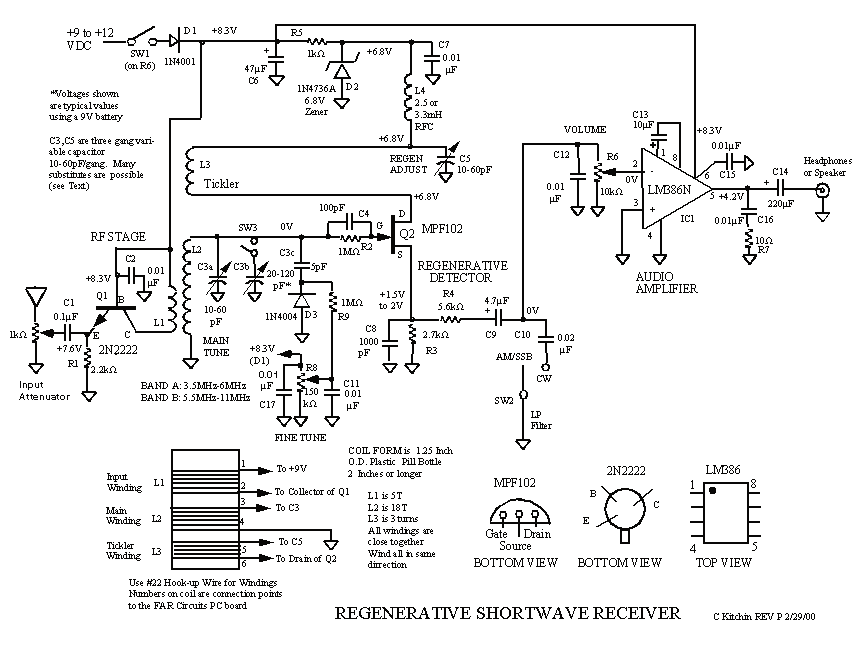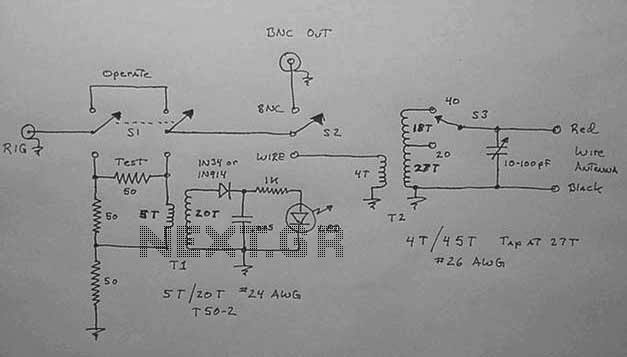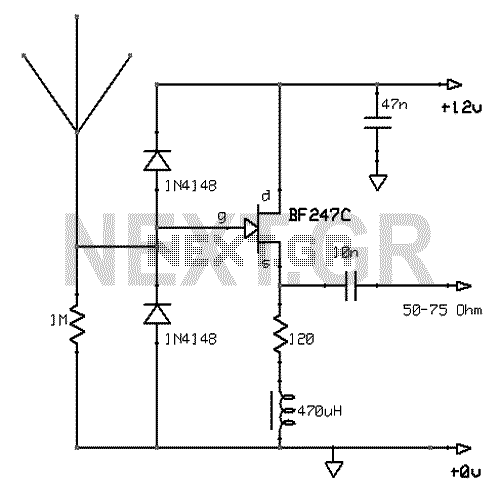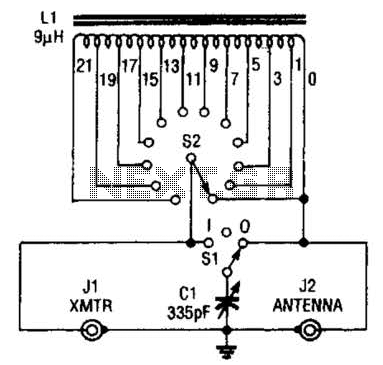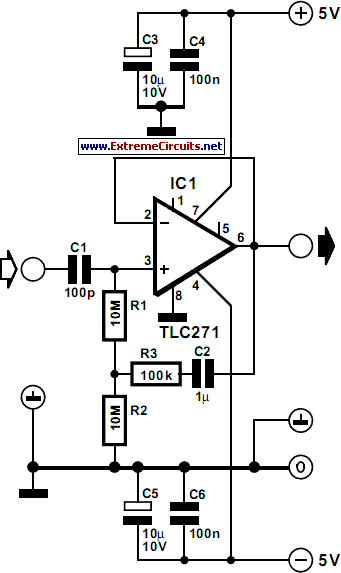
Antenna Booster for FM AM and SW Receiver
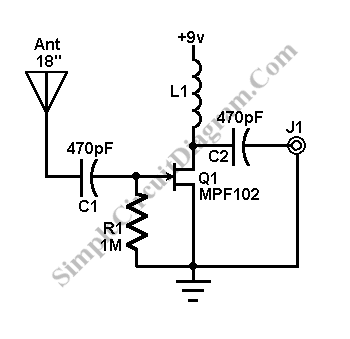
This AM/FM antenna booster circuit amplifies the broadband signal from the antenna. This antenna booster is designed to work for FM, AM, and SW receivers.
The AM/FM antenna booster circuit is an essential component for enhancing radio reception across various frequency bands, including AM (Amplitude Modulation), FM (Frequency Modulation), and SW (Shortwave). The circuit typically consists of a low-noise amplifier (LNA), which is crucial for boosting weak signals captured by the antenna without introducing significant noise.
The circuit design usually incorporates a transistor or an operational amplifier configured in a common-emitter or common-source arrangement to achieve the desired gain. A power supply, often 12V or 9V, is required to power the amplifier. Additionally, decoupling capacitors are included to filter out any power supply noise, ensuring that the amplifier operates efficiently.
Input impedance matching is also a critical aspect of the design to maximize power transfer from the antenna to the amplifier. This is often achieved using a matching network composed of resistors and capacitors. The output stage of the amplifier may include a band-pass filter to ensure that only the desired frequency range is amplified, thus minimizing interference from unwanted signals.
For optimal performance, the antenna booster should be housed in a weather-resistant enclosure if it is intended for outdoor use. Proper grounding techniques must be employed to prevent signal loss and to protect the circuit from lightning strikes. Overall, the AM/FM antenna booster circuit enhances the listening experience by providing clearer and stronger signals across a wide range of frequencies.This AM/FM antenna booster circuit amplify the broadband signal from antenna. This antenna booster should work fro FM, AM, and SW receivers. Here is the.. 🔗 External reference
The AM/FM antenna booster circuit is an essential component for enhancing radio reception across various frequency bands, including AM (Amplitude Modulation), FM (Frequency Modulation), and SW (Shortwave). The circuit typically consists of a low-noise amplifier (LNA), which is crucial for boosting weak signals captured by the antenna without introducing significant noise.
The circuit design usually incorporates a transistor or an operational amplifier configured in a common-emitter or common-source arrangement to achieve the desired gain. A power supply, often 12V or 9V, is required to power the amplifier. Additionally, decoupling capacitors are included to filter out any power supply noise, ensuring that the amplifier operates efficiently.
Input impedance matching is also a critical aspect of the design to maximize power transfer from the antenna to the amplifier. This is often achieved using a matching network composed of resistors and capacitors. The output stage of the amplifier may include a band-pass filter to ensure that only the desired frequency range is amplified, thus minimizing interference from unwanted signals.
For optimal performance, the antenna booster should be housed in a weather-resistant enclosure if it is intended for outdoor use. Proper grounding techniques must be employed to prevent signal loss and to protect the circuit from lightning strikes. Overall, the AM/FM antenna booster circuit enhances the listening experience by providing clearer and stronger signals across a wide range of frequencies.This AM/FM antenna booster circuit amplify the broadband signal from antenna. This antenna booster should work fro FM, AM, and SW receivers. Here is the.. 🔗 External reference
